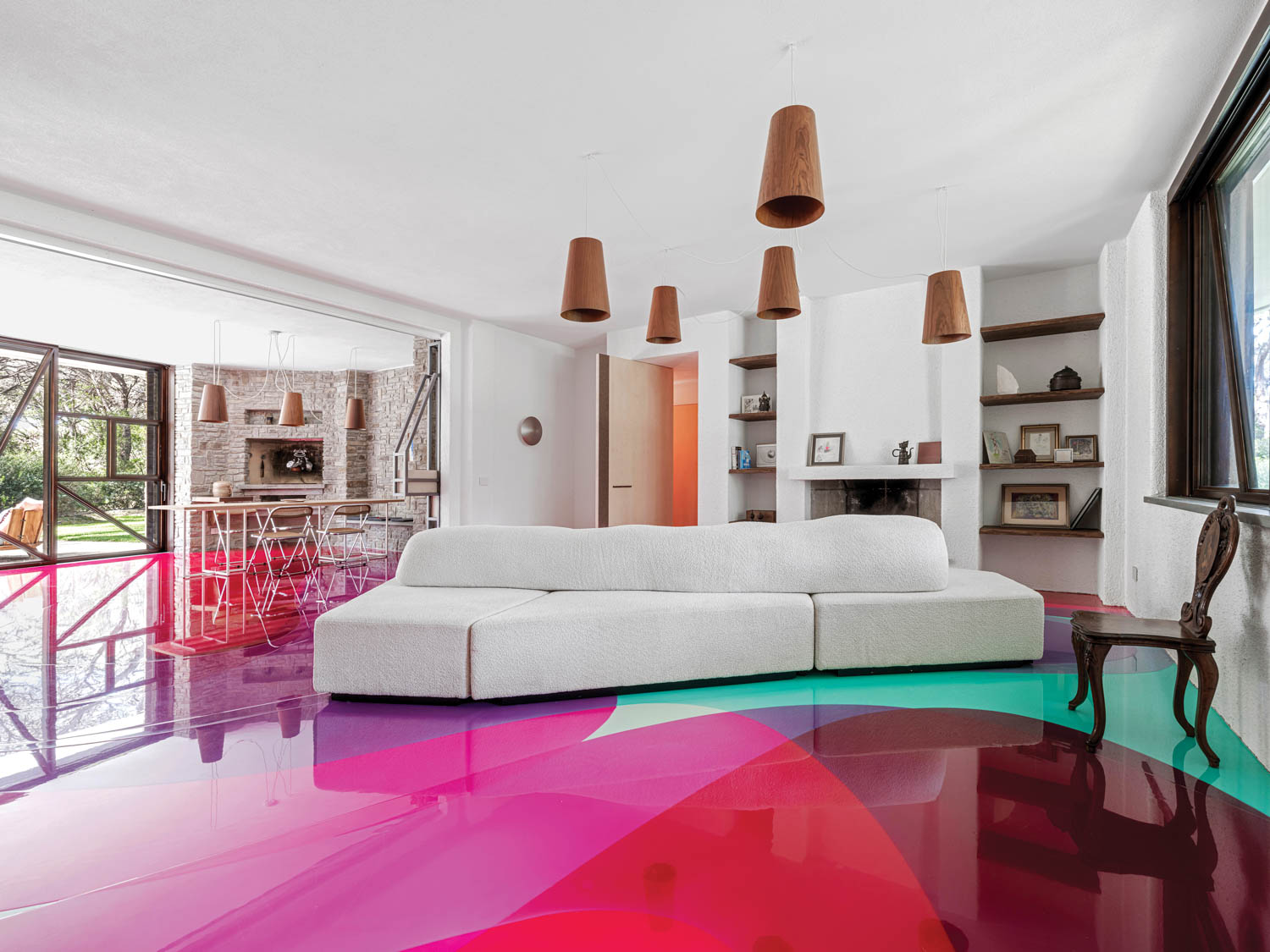Artistic accents enliven this Tuscan family home
Castiglione della Pescaia is an Italian coastal town in southwestern Tuscany known for its Etruscan ruins, nature reserves and relaxed beaches. The town is home to Pineta di Roccamare, a private settlement set in a 200-year-old pine forest. Architect Valerio Ferrari, director of VMCF Atelier, first visited the enclave when he was young. “It’s a magical place because it’s unspoiled and wild,” he says. “Not even in August is it crowded.” Decades later, he and his wife, architect and VMCF co-director Cinzia Mazzone, bought a seven-bedroom summer house there and transformed it into an unconventional canvas for contemporary art.
Built in the 1960s, Pineta di Roccamare is best known for its modern architecture. Many of the 241 homes were designed in the Prairie style by Florentine architect Ugo Miglietta; Pier Niccolò Berardi and Ernesto Nathan Rogers also built villas there. (Early residents included writer Italo Calvino and actor Roger Moore.) Ferrari and Mazzone bought a single-story, 239-square-meter Miglietta house with an adjacent, later-added 57-square-meter guesthouse, just a short walk from the beach. They set about renovating the dilapidated 1970s buildings, landscaping the nearly 8,000-square-meter property, which also includes a pool, and incorporating art into the interior design.
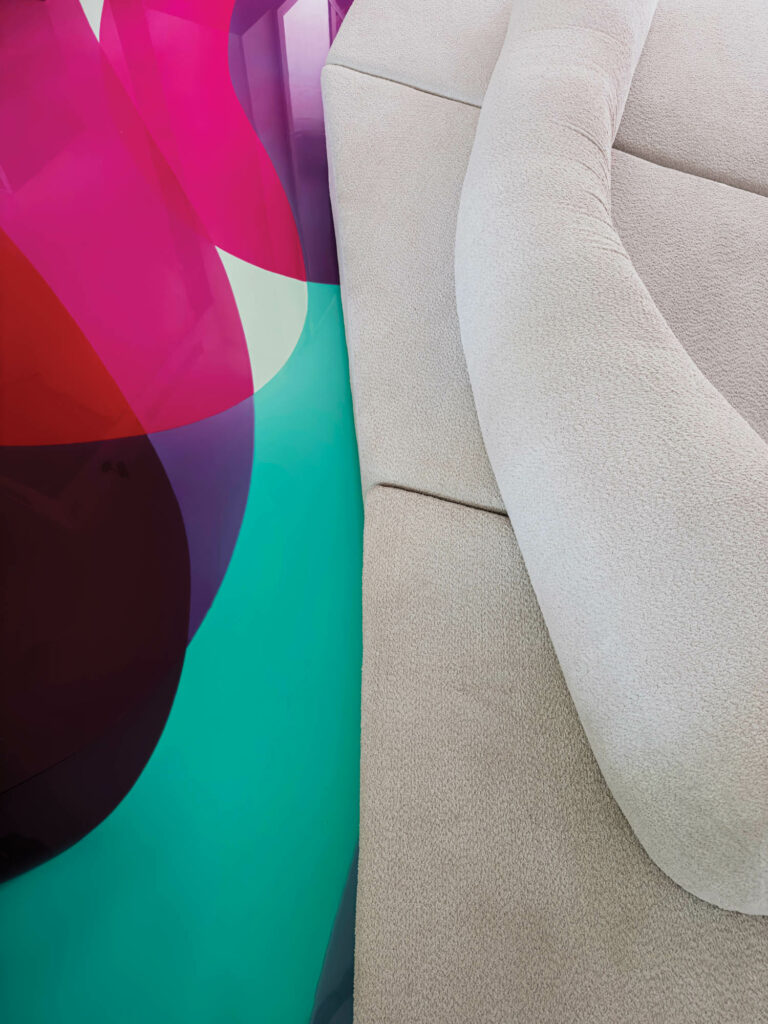



VMCF, short for Visual Machine Concept Facilities, was founded in Paris in 2003 and is now based in Milan. The company often brings an element of theatricality to its projects. Ferrari and Mazzone have designed sets for opera and dance and collaborated on art installations; Ferrari has also written several librettos. Mazzone, a professor at the École Nationale Supérieure d’Architecture de Versailles in France, explores the synthesis of different art forms. Many of their interests come together in the Roccamare house. A custom-made steel media unit rolls in and out of a wall like a stage backdrop; the interior doors are maple partitions that rotate on an axis, reminiscent of theater sets. Mazzone points out that the latter play a kind of “role” in the house, blurring the boundaries between rooms and creating ambiguous spaces. Even the windows are dramatic, traversed by diagonal steel frames.
But the eye-catcher is a shiny assemblage in pink, purple and teal where you wouldn’t normally find artwork: on the floor of the living and dining area. It’s by Peter Zimmermann, who painted a similar floor in 2016 for a solo exhibition in his native Germany. After seeing the work, Ferrari called him and proposed a commission. “I just said, ‘I love your work. I can’t afford your paintings, but I see you’ve made a great floor,'” Ferrari laughs. Zimmermann spent two weeks on site, applying seven layers of swirling, slightly cushiony epoxy resin. It’s so shiny that when the sun shines, the floor reflects the furniture and trees outside.
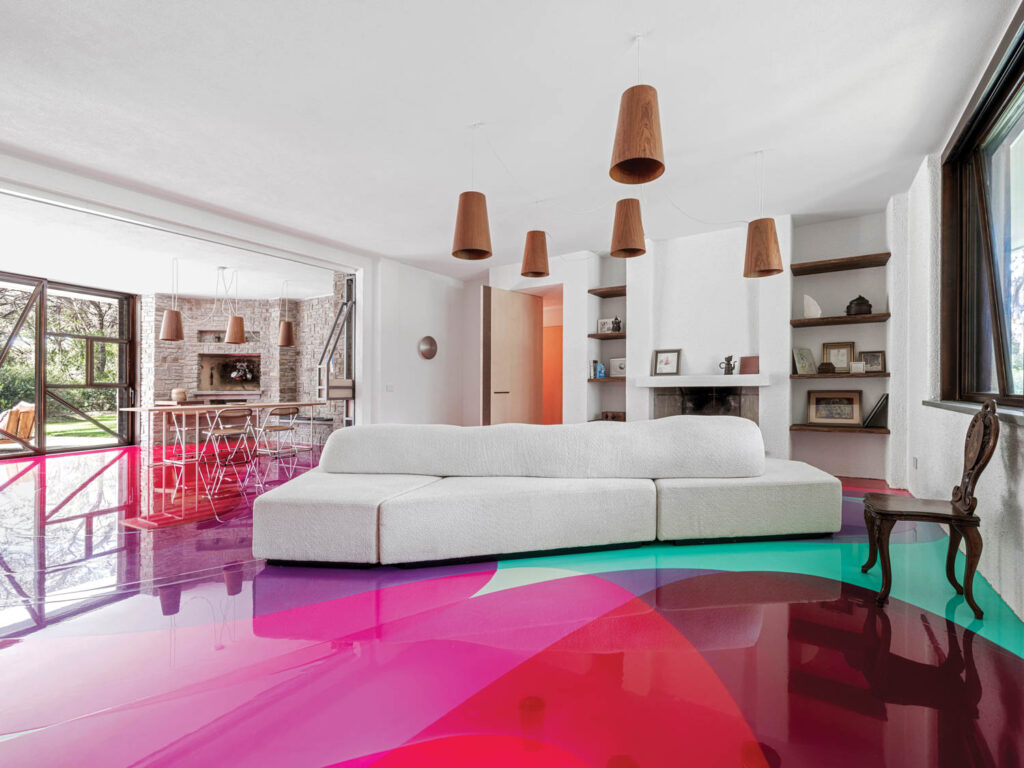


Like the scenography, the floor tells a story. “We always try to create a dialogue with the environment,” explains Ferrari. The Maremma region was a center of experimental mid-century architecture – Vittorio Giorgini’s whale-shaped Casa Balena and the hexagonal Casa Esagono are nearby – and the floor channels that energy. Its groovy vibe also suits the 70s house, feeling as cheerful as summer holidays, while the colors reflect the Silene colorata Flowers growing on the dunes. “It’s something you want to play with,” adds Ferrari. In one corner of the large room there is a sofa by Francesco Binfaré, but many visitors prefer to lie on the soft floor. The couple have even put on a dance performance there.
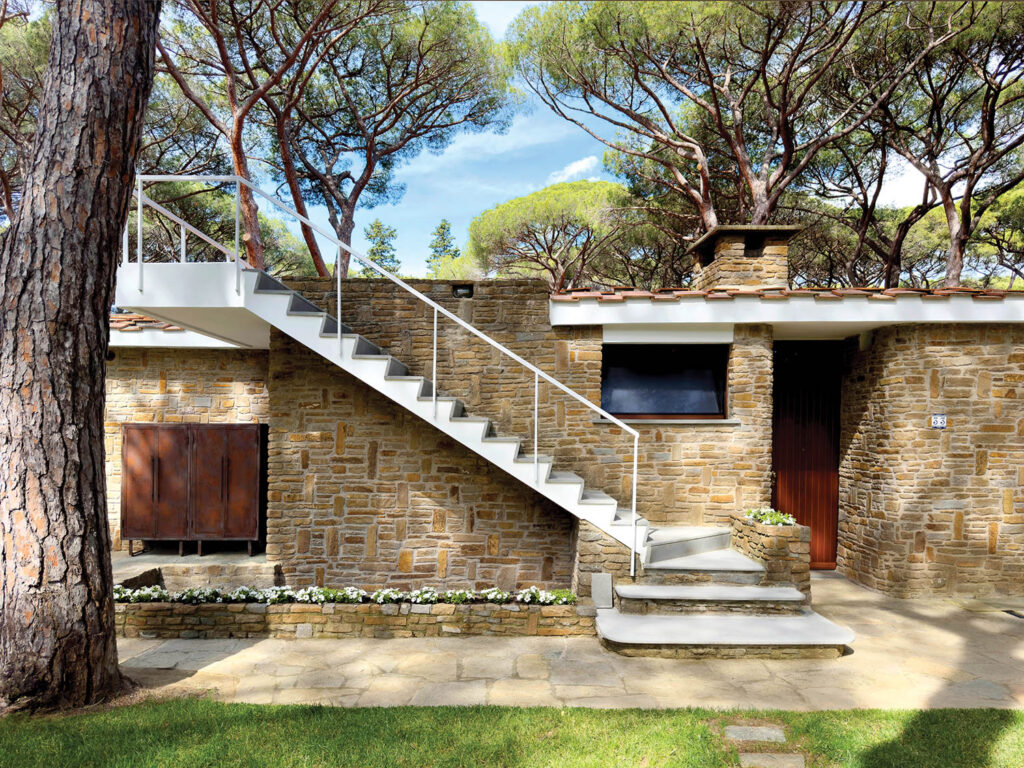

The beauty of Zimmermann’s floor is that it creates a stark contrast to the rest of the house. The epoxy resin meets original Castiglione sandstone interior walls, an OSB dining table, wicker chairs and bleached maple cabinets. “We mixed natural and bright colors, shapes and materials,” explains Ferrari.
By comparison, the bedrooms are minimalist, with custom-made jute headboards and painted pine cabinets. Pendant lights by Italian artist Maria Grazia Rosin hang from the ceilings. Made from Technogel, a moldable, plasticizer-free material, and Murano glass, they are another study in contrasts. VMCF continues to add interesting backgrounds: the microcement floor is divided into two shades of gray for a graphic effect. A 19th-century chair occasionally sits in the corners, or a contemporary painting hangs on a wall.
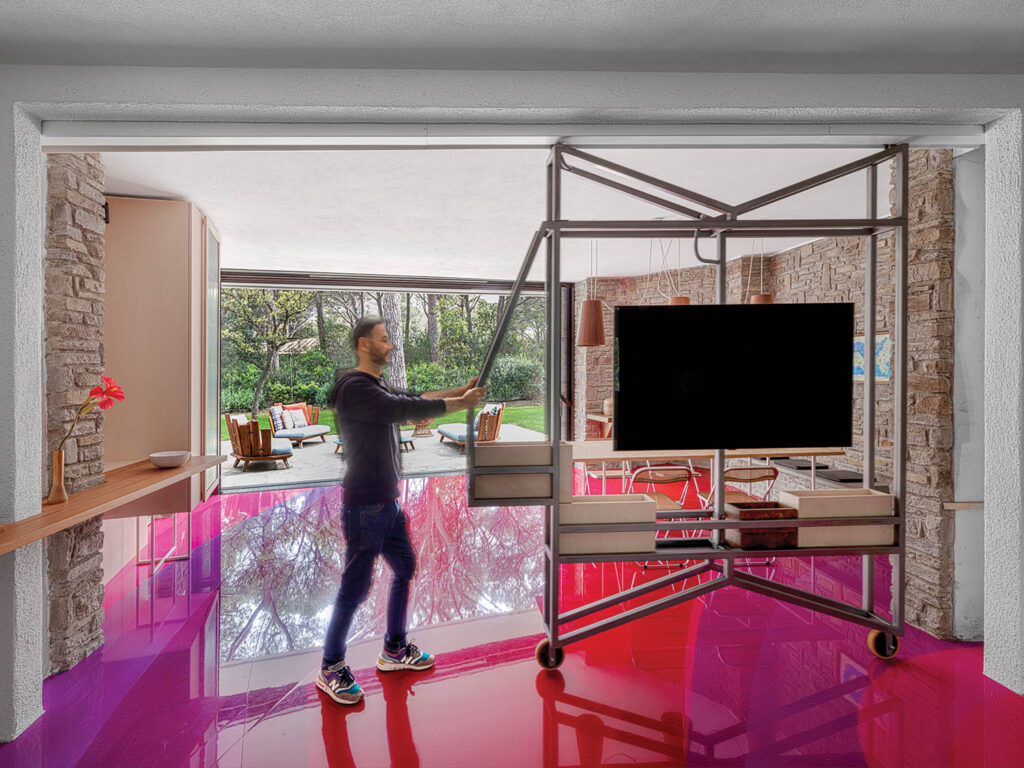

Art can also be found throughout the rest of the house, albeit in a more subtle way. In the kitchen, the wall tiles have a pattern taken from drawings by Chilean painter Roberto Matta, with whom Ferrari worked on a project in the ’90s. In the guest house, German sculptor Christian Henkel built a blue and pink painted plywood piece that has a cupboard on one side, a sculpture on the other, and a bench in between. “We tried to experiment with what happens to the design when a work of art is not simply added, but becomes an integral part of the architecture itself,” explains Mazzone.
Outside, however, Mazzone and Ferrari took a gentler approach. They preserved 30-metre maritime pines, planted native cork, strawberry and mastic trees and restored the sandstone façade. A cistern collects rainwater for the garden and plunge pool, whose teak and stone decking and grey PVC lining blend into the landscape. The terraces next to the main house and guest house feature furniture by Vico Magistretti, Paola Navone and Ludovica and Roberto Palomba. On the roof, reached by an iron staircase, existing porcelain tiles form another terrace. From there, glimpses of the Tyrrhenian Sea can be caught through a gap in the lush canopy.
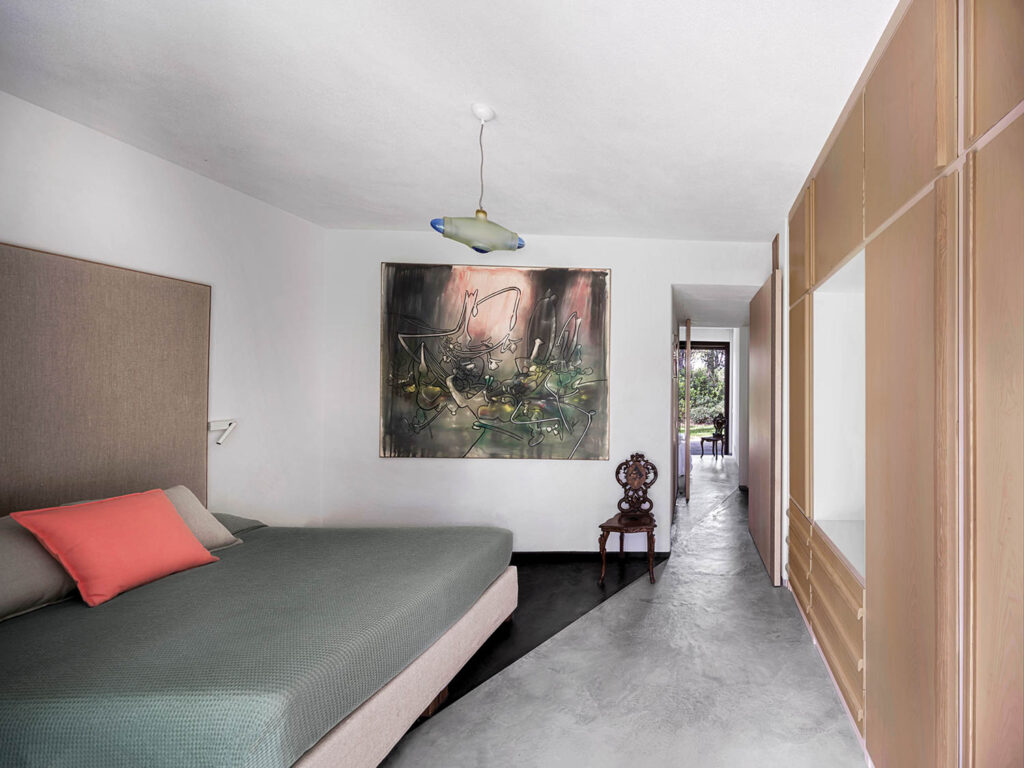

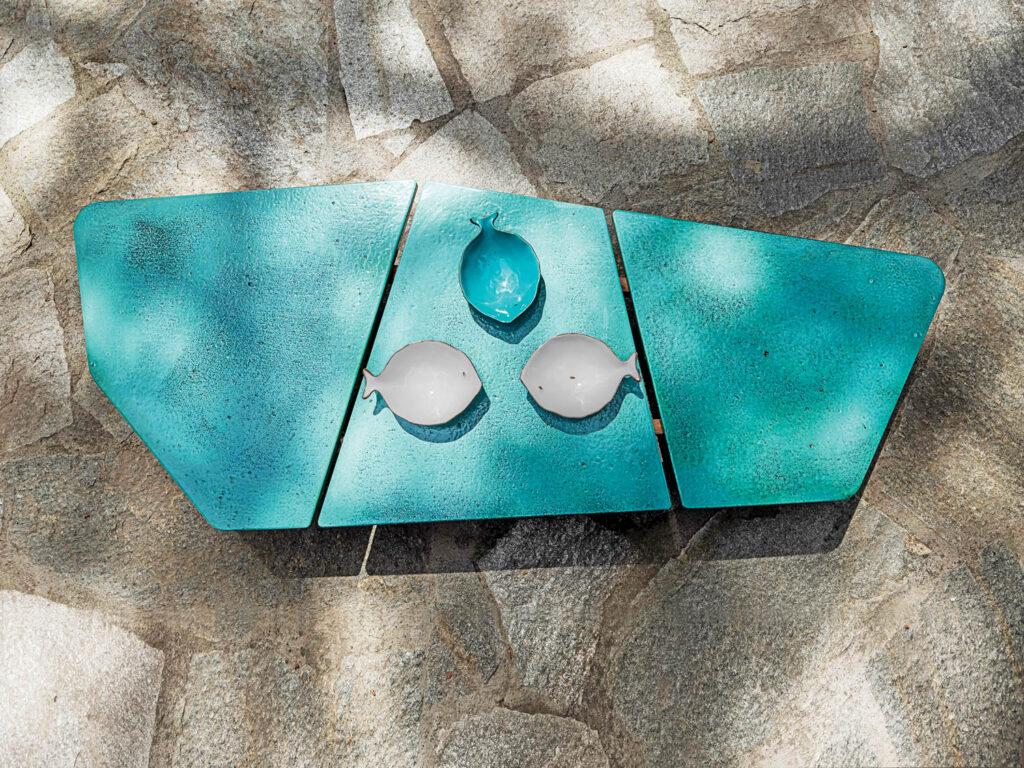

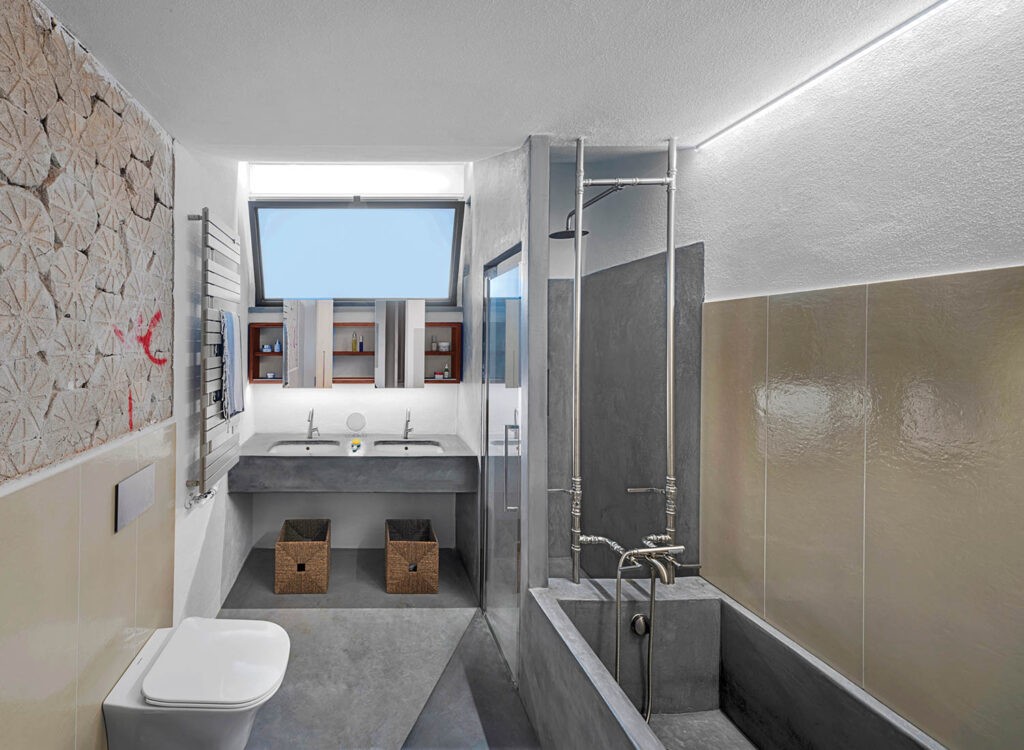

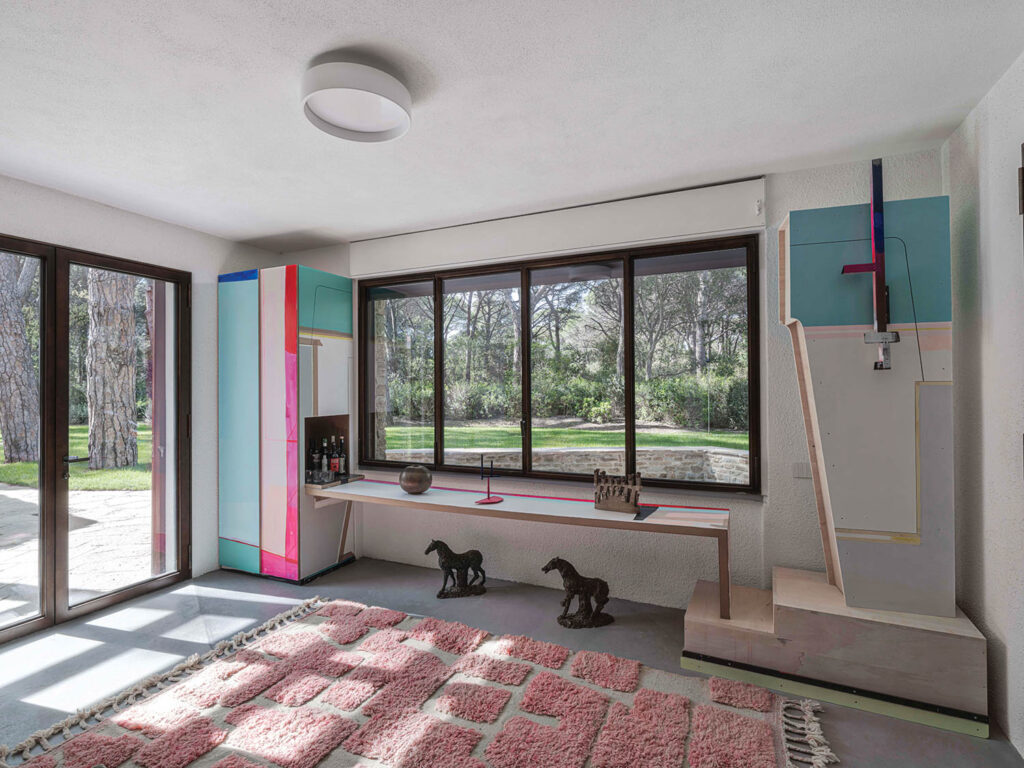



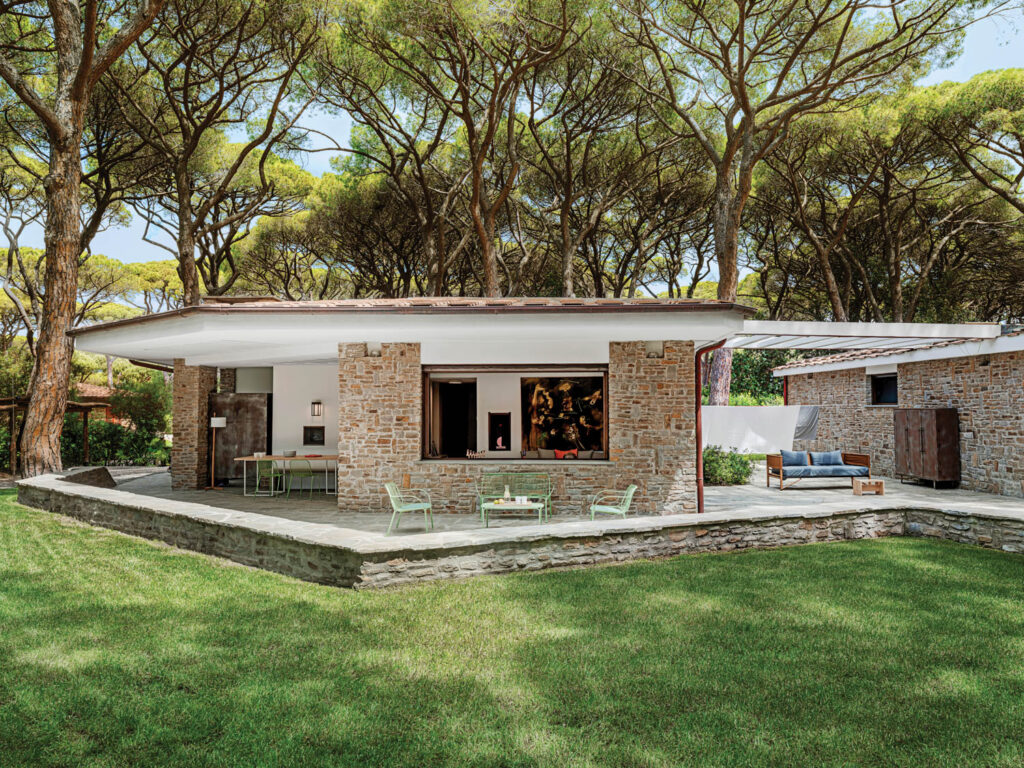

PROJECT TEAM
MARCO FERRARA; ALESSIO DEL LESTO; CARLA GIULIANI; RICARDO ROBERTO: VMCF ATELIER. GIOVANNI MERIGGI; VDA STUDIO: ARCHITECTS OF RECORDING. THE GREEN IDEA: LANDSCAPE ARCHITECT. TELMOTOR: LIGHTING CONSULTANT. DFR STUDIO: STRUCTURAL ENGINEER. ELECTRIC 2000: MEP. CASPANI CUGINI: Workshop for individual furniture. POOL IMPRESS: POOL INSTALLATION. GRECHI COSTS: GENERAL CONTRACTOR.
PRODUCT SOURCES
FROM THE FRONT: EDRA: SOFA (LIVING AREA). SANTA CLAUS AND COLE: WALL LIGHTS (LIVING AREA), LAMPS (TERRACES). BY GALERIA NICOLA QUADRI: PENDANT LIGHTS (LIVING AREA, DINING AREA). NICOLA CORALLO: INDIVIDUAL HEADBOARD (MASTER BEDROOM). SUMMER 1867: BEDSPREAD. TECHNOGEL ITALIA: PENDANT LIGHT. CERAMICA GATTI 1928: INDIVIDUAL WALL TILES (KITCHEN). DAVID GROPPI: WALL LIGHT (BEDROOM). BY LES LOSANGES: CARPET (GUEST HOUSE). ETHIMO: TABLE (TERRACE). ANONIMA CASTELLI: CHAIRS (DINING AREA). POOL GROUP PISCINE: POOL STRUCTURE (POOL AREA). OK, I’m sure: STOOL. GIGACROSS: WALL TILES (BATHROOM). ANTONIO LUPI DESIGN: TOILET. LUCEPLAN: CEILING DESCRIPTION (GUEST HOUSE). ALIAS: SOFAS (TERRACES). BY FUNDACIÓ ENRIC MIRALLES: STOOL. CARTEL: GREEN GARDEN FURNITURE (GUEST HOUSE TERRACE). THROUGHOUT THE TERRANOVA OFFICE: INDIVIDUAL WINDOW FRAMES. FASSA BORTOLO: PLASTER. TASSAN: PAINT.

